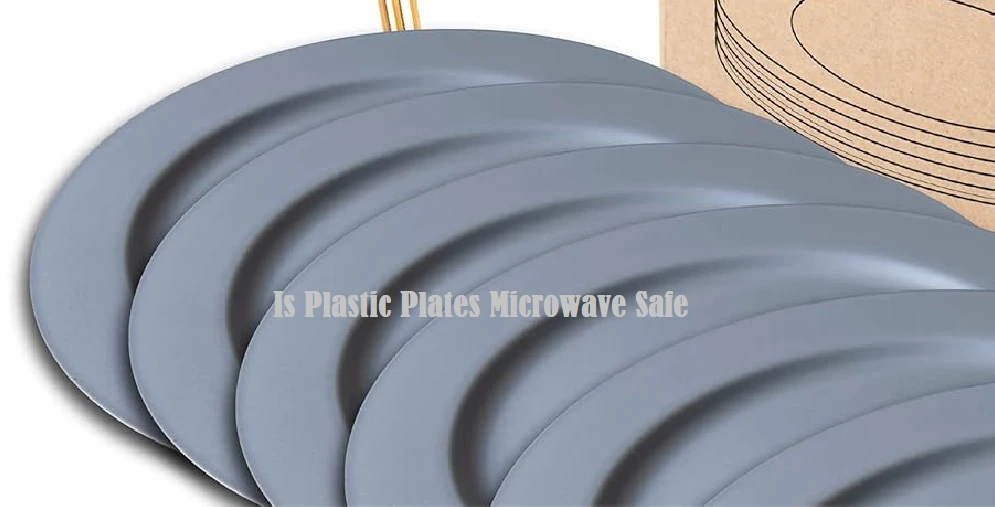Not all plastic plates are created equal. The question, “Is plastic plates microwave safe?” often arises, and the answer largely depends on the type of plastic used.
Microwaving provides enough heat to degrade or even melt certain types of plastic, which can potentially release harmful chemicals into your food. Most microwave-safe plastics are pretty stiff and brittle, designed to withstand the microwave’s heat.
One way to determine if a plastic plate or bowl is safe for microwave use is to look for a symbol on the product. This symbol often resembles a mini microwave with wavy lines, indicating its safety for microwave use. Polypropylene, for instance, is a type of plastic generally considered microwave-safe.
Unless a plastic product is specifically labeled as microwave safe, it’s best to avoid microwaving it. This is especially true for disposable plates or bowls, which may not be designed to handle the microwave’s heat.
The BPA-free plastic plates are a safer choice, as they don’t cause harm to your food when heated. Always check for the microwave-safe symbol or squiggly lines on the product to ensure you’re making a safe choice. Remember, safety first; it’s always better to transfer your food to a microwave-safe dish than to risk using a plate that might not be safe.
Related: Best Microwave-Safe Plastic Plates- Top 7 Choices
Microwave Safe Plastic Symbol
In the world of kitchenware, symbols play a pivotal role in guiding users on how to safely use products. Among these, the microwave safe plastic symbol stands out. It typically appears as a microwave icon with wavy lines, signaling that the product can safely be used in a microwave.
This symbol is crucial as it assures users that the plastic won’t melt, warp, or release harmful chemicals when exposed to microwave radiation.
Always look for this symbol before microwaving any plastic item to ensure the safety and longevity of the product.
What Plastic Plates Are Microwave Safe?
Differentiating between microwave-safe and non-microwave-safe plastic plates is essential.
Plates made from polypropylene are generally considered safe for microwave use. These plates are designed to withstand the heat generated by microwaves without degrading or melting.
On the flip side, some plastics can release harmful chemicals when heated, posing health risks. It’s always advisable to check for the microwave-safe symbol on the product or refer to the manufacturer’s guidelines.

Top Uses of Microwave Safe Plastic Plates
- Effortless Reheating: Ideal for those moments where leftovers beckon, these plates ensure an even warmth, eliminating the need for dish transfers.
- Child-Friendly Dining: Their resilience and safety attributes make them perfect for children, minimizing breakage risks.
- Outdoor Dining: Their lightweight nature makes them a picnic essential, ensuring warm food even in the great outdoors.
- Office Meal Prep: Their compact design is a boon for office spaces, making lunch reheats a breeze.
- Camping Adventures: Even in the wild, warm meals are a possibility with these travel-friendly plates.
Pros and Cons of Using Plastic Plates in Microwaves
Pros:
- Swift and efficient reheating.
- Resilient against breakage.
- Lightweight and easy to handle.
- Cost-effective compared to other materials.
Cons:
- Potential health risks if not certified.
- Environmental concerns linked to plastic use.
- Aesthetic appeal might be less than ceramic or glass.
- Susceptible to scratches or discoloration over prolonged use.